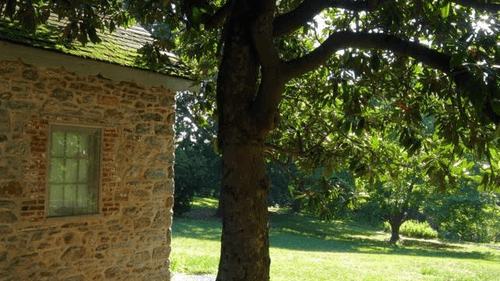Stay in the Loop
BSR publishes on a weekly schedule, with an email newsletter every Wednesday and Thursday morning. There’s no paywall, and subscribing is always free.
A replanted Bartram's Garden makes Kingsessing bloom
Photo essay: the newly replanted Bartram's Garden

Deep in southwest Philadelphia, off a gritty stretch of Lindbergh Boulevard, an easy-to-miss driveway leads past low brick housing, through a buffer of trees, and into history. Tucked into a sliver of land beside the Schuylkill River is Bartram’s Garden, a National Historic Landmark, where John Bartram cultivated modern botany.
Bartram purchased more than 100 acres here in 1728, when Pennsylvania was still a British colony and the area was known as Kingsessing, the name by which it is still known.
Bartram, a naturalist who would serve as botanist to King George III, drained the marshy land and built a home, farm, and gardens, creating a natural laboratory for studying samples from his travels.
A family of botanists
Visiting previously unexplored regions that included Florida, western New York, and the Blue Ridge and Catskill mountains, Bartram collected seeds and cuttings and brought them back for observation and experimentation. Over the next half century he created the first botanical garden in America and is credited with the first U.S. hybridization of a flowering plant.
Bartram passed on his fascination to his children and grandchildren, who continued his work and operated a horticultural business here until 1850. The Bartram family supplied plants for Mount Vernon and Monticello. Son William, a naturalist and artist, accompanied Lewis and Clark into the Louisiana Purchase territory. Ann Bartram Carr, granddaughter of John and niece of William, was a botanical and horticultural expert who, with her husband Robert, greatly expanded her grandfather’s seed and plant business.
Bartram Carr opened an exhibition garden to the public, where she showcased imported species such as peonies and roses from China, poinsettias from Mexico, and her hybrid dahlias and camellias. She thus generated interest in horticulture and popularized gardening, creating a demand for the plants her family studied and cultivated.
Protecting historic roots
History is the core feature at Bartram’s Garden, and recent enhancements have been made to the almost 300-year-old John Bartram House, which faces the Schuylkill, and the Ann Bartram Carr garden, Philadelphia’s only 19th-century flower garden, which has been completely replanted.
Though rich in history, Bartram’s Garden is not buried in the past. The 45-acre site is as relevant to its 21st-century community as it was to Washington, Hamilton, Franklin, and other founding luminaries who visited.
The Farm at Bartram’s Garden is an urban farm and greenhouse facility that provides locally grown fresh food for underserved southwest Philadelphia. Visitors stroll the Bartram Mile, a riverside recreational trail and project of the Philadelphia Department of Parks and Recreation and Schuylkill River Development Corporation. Soon, the Bartram trail will connect to the Schuylkill River trail, providing a scenic link to Center City. There is also a community boathouse and dock, offering recreational water access for fishing, birding, and on Saturdays through October, free canoeing and kayaking. This section of the lower Schuylkill continues to draw people as it drew the Bartrams, who came and stayed not because it was historic, but because it was natural, peaceful, and beautiful.












What, When, Where
Bartram’s Garden. Fifty-fourth St. and Lindbergh Boulevard, Philadelphia. (215) 729-5281 or bartramsgarden.org.
Sign up for our newsletter
All of the week's new articles, all in one place. Sign up for the free weekly BSR newsletters, and don't miss a conversation.
